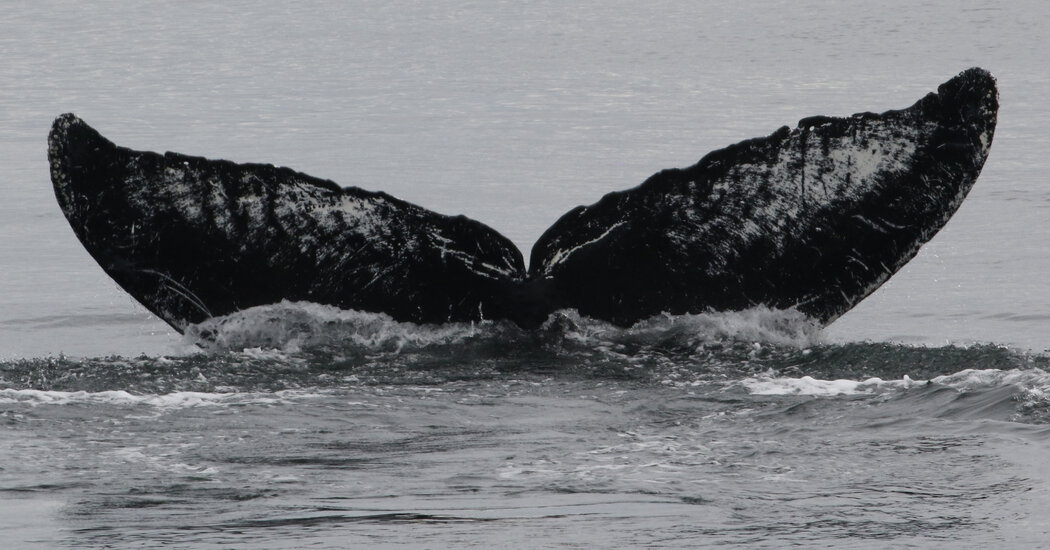Old Timer, a male first photographed in 1972, was spotted last month near Alaska, enduring in the Pacific Ocean while some other humpbacks have struggled in a changing environment.
A humpback whale’s tail is as unique as a fingerprint. The lobes, or flukes, at the end of the tail have scalloped edges that vary from whale to whale; the undersides feature distinct black-and-white patterns that mark a whale for life.
When Adam A. Pack, a marine mammal researcher at the University of Hawai’i at Hilo, was photographing whales in Alaska’s Frederick Sound in July, he instantly recognized the flukes of an old friend.
Emphasis on old. The tail — mostly black, with a wash of white speckles near the edge — belongs to a whale named Old Timer. First spotted in 1972, Old Timer is now a male of at least 53 years, making him “the oldest known humpback whale in the world,” said Dr. Pack, who is also the co-founder and president of The Dolphin Institute.
Humpback whale populations, once severely depleted by commercial whaling, have rebounded in recent decades. But the animals are threatened by ship strikes, entanglements in fishing gear and climate change. And Dr. Pack had worried about Old Timer: The last time he had seen the whale, in 2015, was in the middle of a record-breaking, yearslong heat wave. Scores of seabirds and marine mammals, including humpback whales, died.
But after nine years, he saw with his own eyes that Old Timer had survived.
“It was heartwarming, because I realized it wasn’t just the old whales who were perishing,” Dr. Pack said. “Some of them were resilient.”
Historically, tracking the whereabouts of the whales has been done the hard way: by scientists using their own eyes to compare new fluke photos with old ones. But future studies of Old Timer and other humpbacks of all ages are set to be accelerated with artificial intelligence. And Dr. Pack hopes it will help him learn how, and why, some whales can withstand tough conditions.
